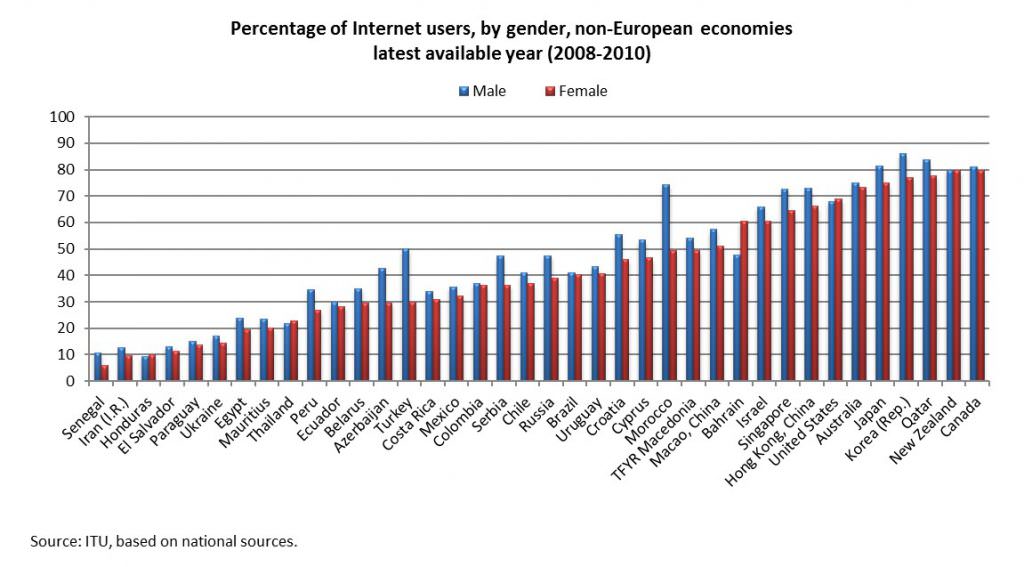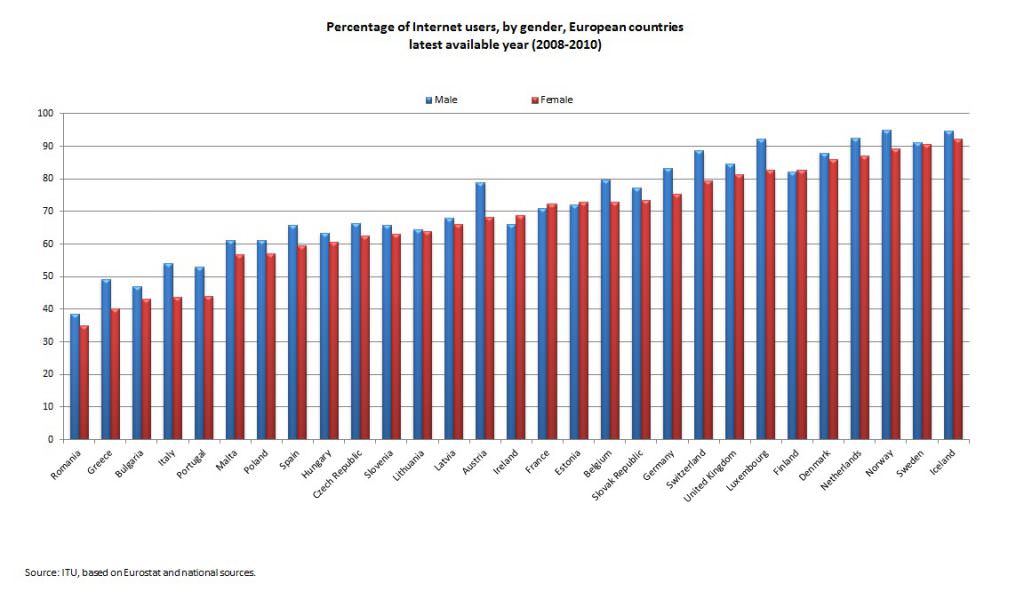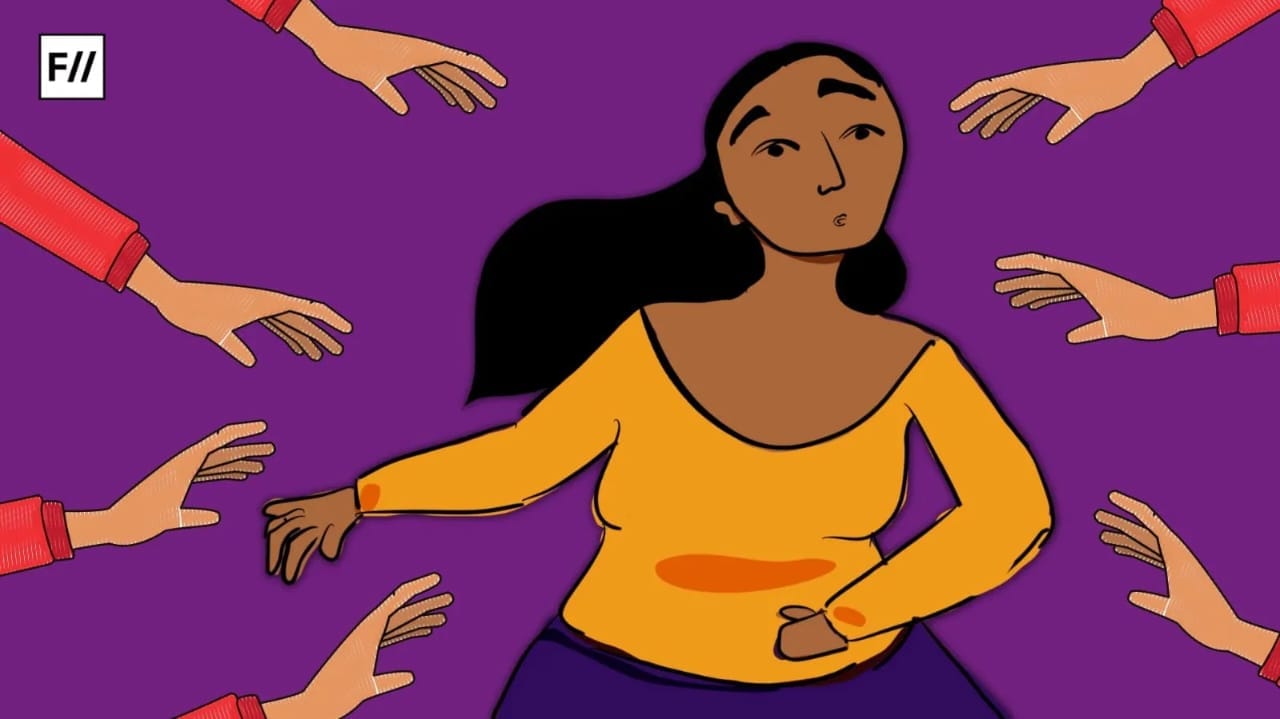Posted by Tariqa Tandon
The Internet is not an equal playing field – the socio-political inequalities that exist in the offline societies are being replicated at the online level as well. The problem starts with the fact that few women were included in the design and conception of the internet itself. Furthering the issue is that in India (and in many other countries around the world), fewer women have access to the internet. With less female voices available online, there is a danger of male voices co-opting the narrative and occupying the space. What this culminates in is an online space designed for men, by men, a space which is harder for non-male identifying individuals to navigate.

 As the internet passes through the country, reaching semi-rural and rural areas even, the scope for cyberbullying has also increased. In recent studies, India was ranked third in the world for cyberbullying. There are gendered implications of cyberbullying – women are more likely to be targets of cyberbullying. In addition, raising voices against the gender imbalances of online or offline world makes people more likely to be targets of online harassment.
As the internet passes through the country, reaching semi-rural and rural areas even, the scope for cyberbullying has also increased. In recent studies, India was ranked third in the world for cyberbullying. There are gendered implications of cyberbullying – women are more likely to be targets of cyberbullying. In addition, raising voices against the gender imbalances of online or offline world makes people more likely to be targets of online harassment.
In the vast array of forms of cyberbullying is the phenomenon of image-based sexual abuse, popularly known as revenge porn. Revenge porn, as described by the Oxford English Dictionary, is “Revealing or sexually explicit images or videos of a person posted on the Internet, typically by a former sexual partner, without the consent of the subject and in order to cause them distress or embarrassment”. In the day and age of social media, where everything is uploaded instantly, and life is lived in the “live” feature, vindictive or malicious intent does not necessarily imply a well thought out plan. It could also imply uploading content without thinking through the consequences.
That revenge porn isn’t even identified as revenge porn is telling of the knowledge gaps that exist about the issue. Most definitions of revenge porn do not include whether the image or video was captured with the consent of all parties, or if the sexual act in question itself was consensual. Re-examining few famous cases that have emerged in the last few years by taking a relatively loose definition of revenge porn highlights that many of these incidents have not been categorised as such in popular media narratives.
Also read: “Internet – A Dark Carnival Of Humanity’s Wretched Impulses”: John Oliver
In Canada, the shocking suicides of two teenagers within 6 months of each other, Amanda Todd and Rehtaeh Parsons, are still described on Wikipedia and other media outlets as cases of “cyberbullying”. In Todd’s case, sexually explicit photos of her were distributed on the internet, prompting her family to relocate several times. However, she was unable to escape her past when her bully kept sending the sexually explicit images of her to students, teachers, and parents of her new schools. After one failed suicide attempt, she killed herself in 2012. Rehtaeh Parsons was 15 when she was allegedly raped, while inebriated, at a party. The incident was photographed and distributed to people in her school and town few days after the incident. She was driven to suicide due to the harassment and shaming that came from the incident.
Over in the US, in the 2012 Steubenville High School rape case was the 2012 Steubenville High School rape case, an inebriated high-school girl was repeatedly raped by her peers, who then distributed the images and videos on social media. The 2012 suicide of Audrie Pott was compared to the suicide of Rehtaeh Parsons due to the similar circumstances, where a drunk Pott was sexually assaulted, photos of which were distributed on social media.
In India, perhaps the most infamous case of revenge porn was that of the DPS MMS scandal in 2004. The two-and-a-half-minute clip of two consenting 17-year-old Delhi Public School was distributed through multimedia messaging services (MMS), without the consent of all participants, and someone even attempted to sell it on the internet. More recently, the surge in popularity of rape videos in India are a testament to the growing market of revenge porn, especially more violent examples of it.
Now, there is one important distinction that differentiates some of these above cases from the others – in the cases of Amanda Todd and the DPS MMS scandal, the sexual acts themselves were consensual (given that in both instances the victims were under the age of consent, “consensual” might be up for debate), while the other cases described are instances of the documentation and distribution of rape. The common element is that the videos and images of all were distributed without the knowledge of the participants, making these examples of revenge porn. It is devastating in itself if one is a victim of revenge porn, but having to relive your rape again and again on social media and the internet takes the violence up a notch. The fact that cases like these continue to occur, and that there seems to be a demand for revenge porn and rape videos is a testament to the deeply entrenched rape culture in our society.
Using euphemisms like “sex scandals” or merely referring to these instances as “cyberbullying” take away from the severity and urgency of the cases. In addition to any other crime that these instances have highlighted, including that of rape, these are also instances of image-based sexual abuse. There can be multiple loci of injustices within one incident, and not identifying or acknowledging all the instances of injustices makes a crime appear less serious than it is. In turn, when a crime is not treated seriously, by law enforcement and the media, they easily dismiss the case, or relegate it to the bottom of the pile. And in circumstances where no one seems to be taking their case seriously, especially law enforcement, some individuals, desperate for any solution to end their problems, turn to the last possibility – suicide.
Also read: Image-Based Sexual Abuse, Or Revenge Porn As Depicted In Films
About the author(s)
Guest Writers are writers who occasionally write on FII.




